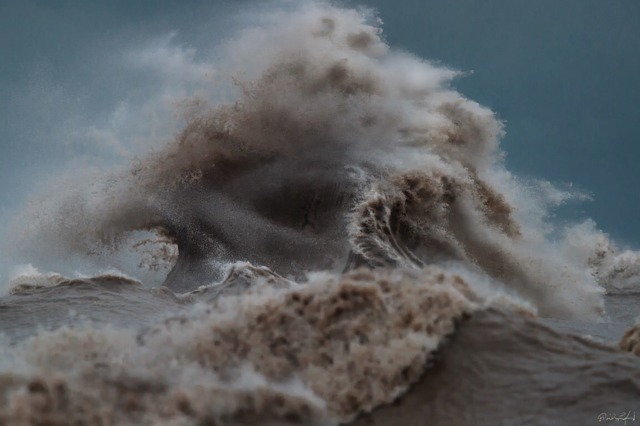There's not many of us who would brave the cold, harsh elements along Lake Erie to capture its beauty, but one Canadian photographer did, and we're thankful for it.
Dave Sandford spent years capturing the ever-changing and awe-inspiring behavior of the Great Lakes. Commonly known as the "Gales of November," Sandford braved the elements to see the wrath of winter winds and its effect on the Great Lakes.
The Gales of November is responsible for some of the deadliest shipwrecks on the Great Lakes recorded— the Great Lakes 'Hurricane' of 1913 caused dozens of shipwrecks and claimed the lives of 235.
Wahbeshkegoo Kechegahme - Lake Erie “The white water lake” pic.twitter.com/SX9hPob5FA
— 🌊 Dave Sandford 🦈 (@Dave_Sandford) January 23, 2018
The strong winds that cause the "liquid mountains" range from mid-October through December, when cold, dry air from Canada mixes with warmer, moister air from the Gulf of Mexico, according to the National Weather Service.
Lake Erie pic.twitter.com/K6kOlrLEwh
— 🌊 Dave Sandford 🦈 (@Dave_Sandford) January 24, 2018

Dave Sandford— Autumn 2015
During the storm season, water can drop below freezing causing dangerous conditions for photographers like Sandford who stand in the icy waters to capture the ultimate photograph.
"The cold zaps your muscles," Sandford told ABC News. "I might last an hour and a half in the water before I'm too fatigued to carry on."
 Dave Sandford—December 2017
Dave Sandford—December 2017


